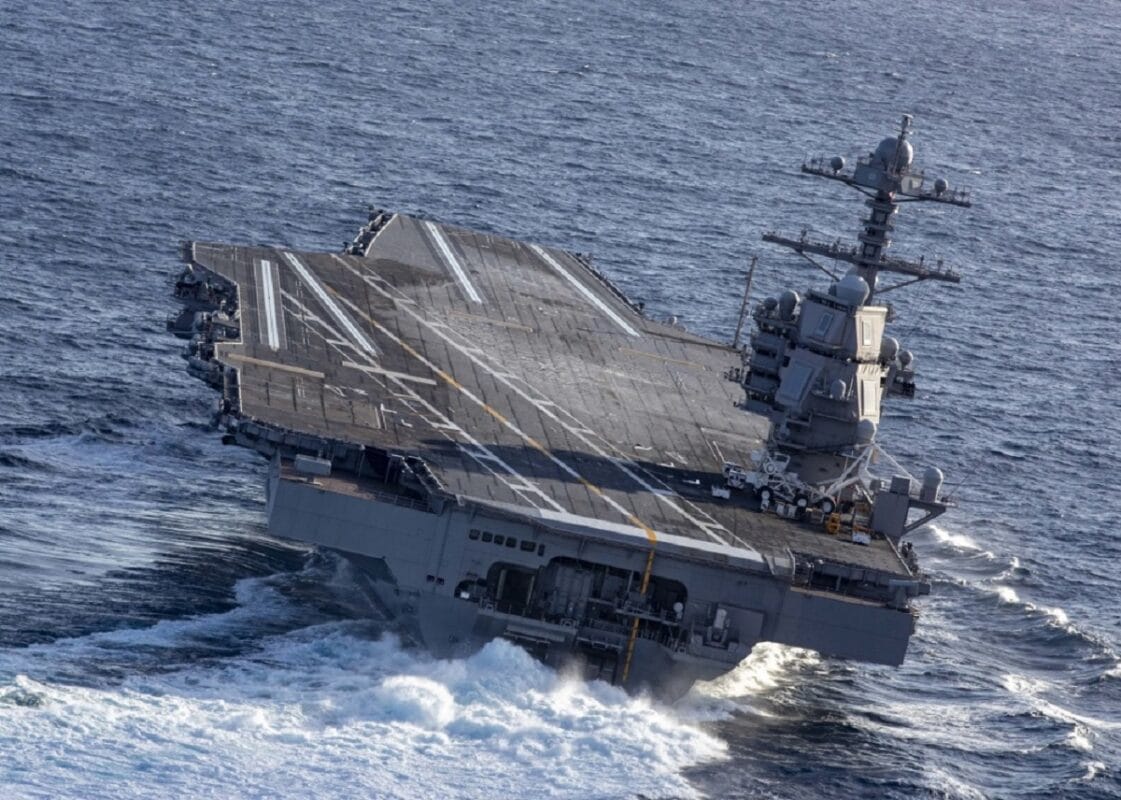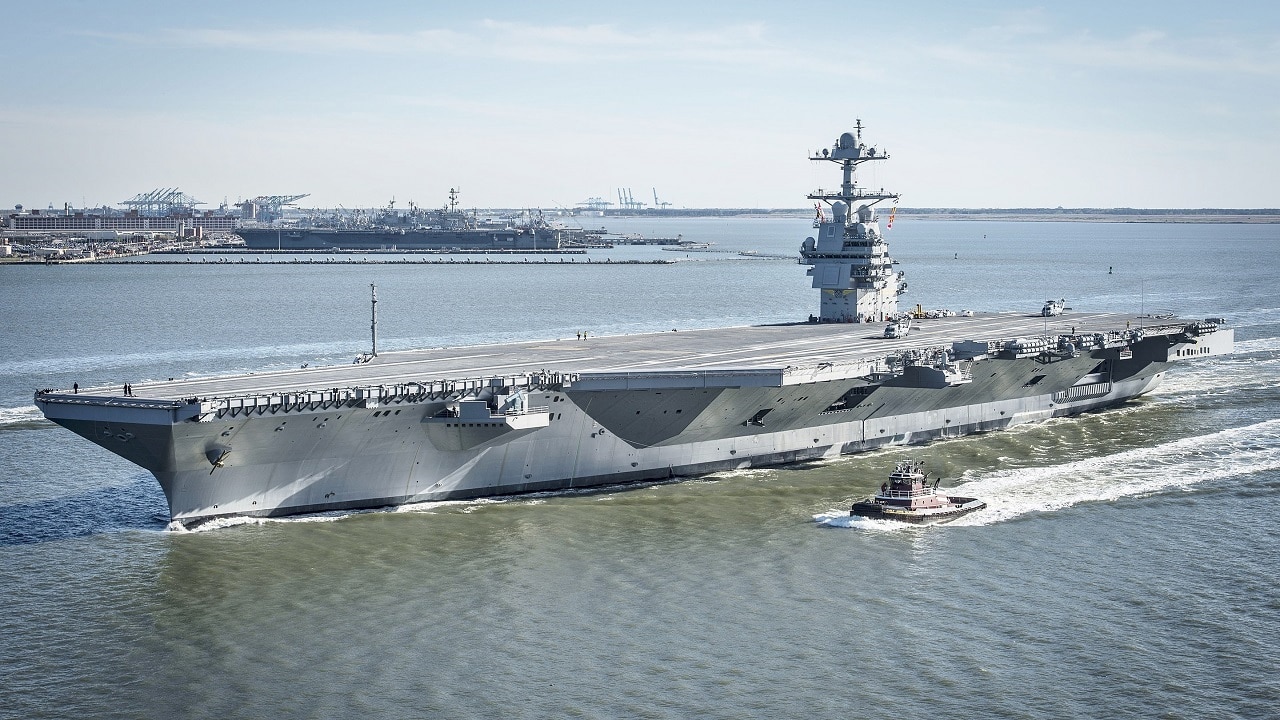Thee USS Gerald R. Ford Ready to Be Deployed in 2022: The USS Gerald R. Ford aircraft carrier is finally set to be deployable this year.
One of the main advantages of this new carrier is that it will increase the rate of sorties flown by 30 percent. The carrier achieves this improved rate by using magnetic motors to lift up to 24,000 pounds of munitions up and down rather than depending on the old cable elevators that the Nimitz-class uses. Also, the new Electromagnetic Aircraft Launch System (EMALS) puts aircraft into the air faster than the dated steam catapult launcher.
USS Gerald R. Ford Is Itching to Get to Sea for an Official Deployment
The $13 billion USS Gerald R. Ford is the lead ship of the class. There have been some delays along the way due to technological advancements that have never been tried before, but the Navy is confident about its timeline now.
Rear Admiral Gregory Huffman, the commander of Carrier Strike Group 12 who will lead the Ford carrier strike group on its first deployment, told USNI News in October that “Everything is on track. We’re still looking to get out as scheduled after the six-month availability. No big show-stoppers that they’ve come across at all. So very, very positive news coming from the captain and from the shipyard. And then as we come out of that, I think we’re going to be set very well to get back in that operational mindset and get ready for the deployment.”
Arresting Gear Is Improved
Launching and arresting aircraft, the carrier’s main duty has been improved. It will now take less maintenance and fewer personnel for flight deck operations. The Advanced Arresting Gear, which arrests airplanes when they land, replaces the hydraulic Mark 7 arresting gear. This is a critical improvement that will lead to more speed and efficiency top-side.
USS Gerald R. Ford Has Passed Shock Trials
The Ford has shown its survivability by passing shock trials last year – a testing period when 40,000 pounds of explosives are blasted near the carrier to assess whether the vessel can take a punch. It also finished a crew certification process in November. Last month the crew passed tests on board “targeting medical response, seamanship and navigation, and ship-wide damage control and tactical fighting drills,” according to the Navy Times in January.
Busy Flight Deck, Lower Maintenance Periods, and Improved Survivability
The island on the Ford is smaller which allows more aircraft on deck to permit additional assets to get in the air quickly. The ship should be able to stay at sea longer without as much time docked for maintenance compared to the Nimitz-class. The carrier will have improved fire-fighting systems and a new hull design for better survivability. Another plus for safety is that the new elevators move on steel rails with electromagnets so there is no oil or hydraulic fluid that could become a fire hazard.
The EMALS system will hurl all kinds of different aircraft into the air – from drones to heavy warplanes. The Ford has two nuclear reactors and four shafts that push out a top speed of over 30 knots. It’s about the length of three football fields. The displacement is 100,000 tons. There are 4,550 sailors on board and at least 75 aircraft. The Ford is armed with the Evolved Sea Sparrow Missile, the Rolling Airframe Missile, and the Close-in Weapons System (CIWS).

ATLANTIC OCEAN (Oct. 29, 2019) USS Gerald R. Ford (CVN 78) conducts high-speed turns in the Atlantic Ocean. Ford is at sea conducting sea trials following the in port portion of its 15 month post-shakedown availability. (U.S. Navy photo by Mass Communication Specialist 3rd Class Connor Loessin)
USS Gerald R. Ford: Where to Next?
It will be interesting to see where the first Ford carrier battle group will be deployed. The Mediterranean and the Persian Gulf is always a possibility as Iran is working toward a nuclear device and the Houthi-rebels in Yemen are threatening American personnel stationed in the United Arab Emirates. East Asia would be another zone of interest as the Taiwan Strait becomes a flashpoint in a potential conflict between China and Taiwan.
The Navy has waited on the Ford for years, and it is good to see that despite some delays, the aircraft carrier is ready to go to war.
Now serving as 1945’s Defense and National Security Editor, Brent M. Eastwood, PhD, is the author of Humans, Machines, and Data: Future Trends in Warfare. He is an Emerging Threats expert and former U.S. Army Infantry officer. You can follow him on Twitter @BMEastwood.

